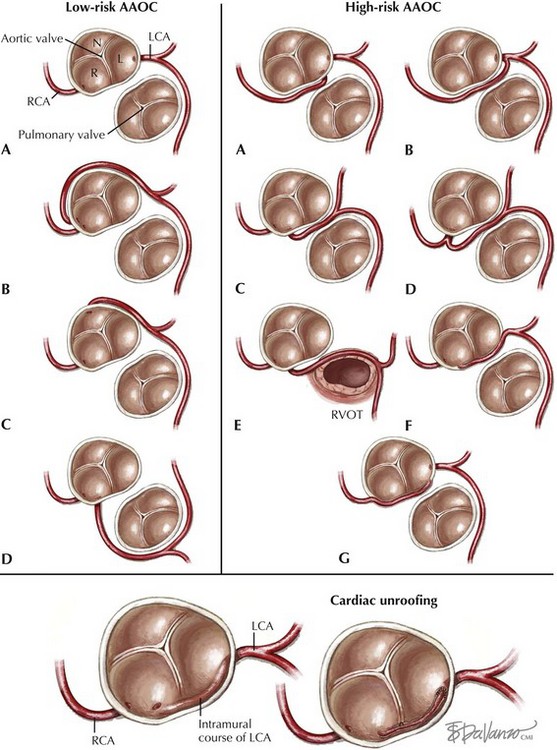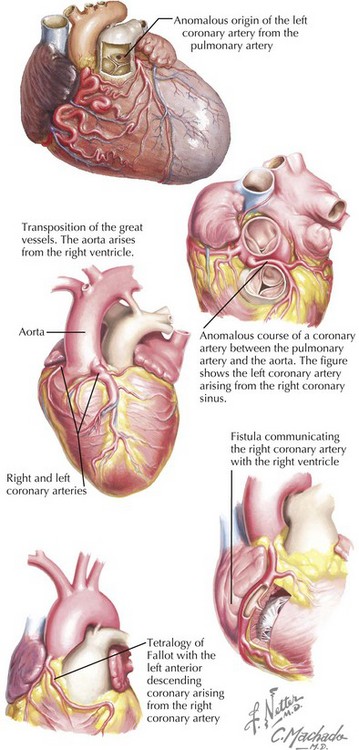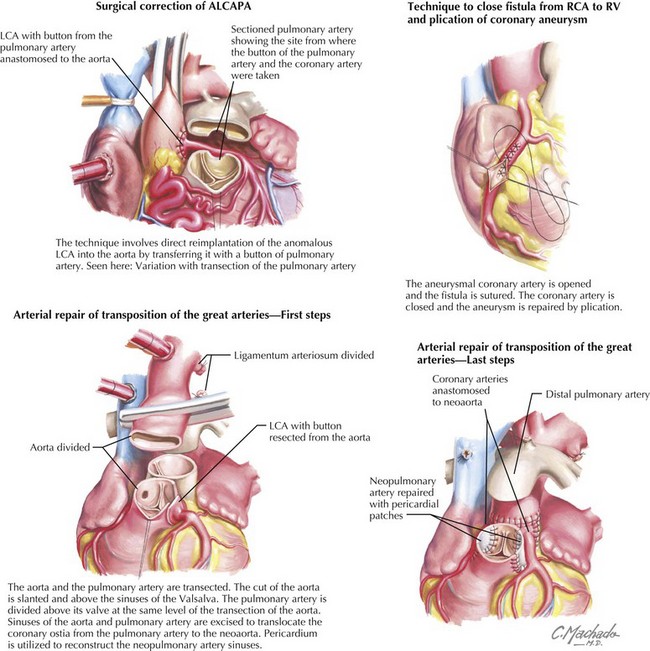57 Congenital Coronary Anomalies
Unfortunately for patients with congenital coronary anomalies, a common presentation is with cardiac arrest or sudden cardiac death. This clinical relevance underpins the necessity of understanding the anatomy and presentation of congenital coronary anomalies and their treatment options. The two primary congenital coronary anomalies, anomalous origin of the left coronary artery from the pulmonary artery (ALCAPA) and anomalous aortic origin of coronaries (AAOC), as well as two entities associated with coronary artery anomalies—coronary artery fistulas and anomalous coronary circulation—are the focus of this chapter (Fig. 57-1).
Anomalous Origin of the Left Coronary Artery from the Pulmonary Artery
ALCAPA is a rare congenital anomaly, usually an isolated lesion, occurring in 1 in 300,000 live births (Fig. 57-2). The clinical spectrum of ALCAPA is also known as Bland-White-Garland syndrome. Infants with myocardial ischemia typically present with failure to thrive, profuse sweating, dyspnea, pallor, and atypical chest pain upon eating or crying. Malignant arrhythmias leading to sudden cardiac death are the most extreme presentation of myocardial ischemia in ALCAPA. During the neonatal period, high pulmonary vascular resistance ensures antegrade flow from the pulmonary artery through the LCA. However, as this resistance diminishes, there is an eventual reversal of flow, with left-to-right shunting through the pulmonary artery. The result is the phenomenon of “coronary steal,” with LV perfusion becoming dependent on collateral circulation from the RCA.
Surgical correction remains the gold standard of therapy, but important changes in technique have resulted in improved outcomes. Surgical repair involves direct reimplantation of the anomalous LCA into the aorta by transferring it with a button of pulmonary artery (Fig. 57-3). There are several options to customize the surgical approach so as to overcome anatomic challenges of the length and course of the LCA for reimplantation. In adults, in whom reimplantation is more technically challenging, bypass grafting with the left internal thoracic artery is an equally effective approach.






